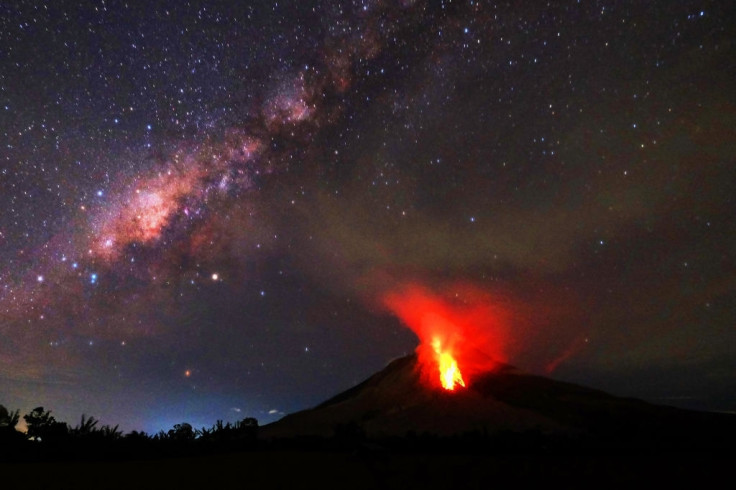Will a Nasa satellite predict when the Yellowstone supervolcano will erupt?
Nasa-funded research shows how carbon emissions may help predict eruptions.
Satellites in low-Earth orbit can be used to help scientists predict when volcanoes are going to blow by monitoring gas emissions, new research suggests.
Research funded by Nasa's Jet Propulsion Laboratory and published this week in the journal Science features the space agency's Orbiting Carbon Observatory-2 (OCO-2) satellite.
Before volcanoes erupt there are a number of warning signs – including tiny tremors rarely felt by humans.
In many cases, one key sign is when they start to emit carbon dioxide and sulfur dioxide, but monitoring these gas levels remains dangerous work for scientists.
Researchers, therefore, are testing if "remote sensing" can now be used to detect rising dioxide emissions without putting people and equipment in danger.
A breakthrough in the research, experts believe, would help prevent humanitarian disasters and false alarms. Typically for Nasa, answers to the problem lie in space.
The Science article about the findings, titled "Spaceborne detection of localised carbon dioxide sources", was co-authored by Michigan Technological University volcanologist Simon Carn.
It detailed the first known measurements of localised anthropogenic (those originating from human activity) and natural carbon dioxide sources from a satellite.
What does that mean? Essentially, the satellite's sensors were able to pinpoint sources of carbon dioxide in the atmosphere and separate them into two categories: human-made and natural.
The OCO-2 satellite sensors measure reflected sunlight – radiation – in high resolution using wavelengths undetectable to the human eye.
When light passes through carbon dioxide, some is absorbed by the gas and the remaining light bounces off the ocean and the Earth.
Nasa's cutting-edge sensors were able to measure the light that bounced back to quantify what was absorbed by carbon dioxide, allowing scientists to isolate emission sources.

"Volcanoes can be strong, localised sources of carbon dioxide," Carn explained. "But on a global basis, all available evidence indicates that human activities are emitting much more carbon dioxide than volcanoes."
Last month, a volcano in Bali named Mount Agung began to smoke, with little earthquakes trembling beneath the mountain. Officials evacuated thousands of people to help prevent a repeat of what happened when Agung erupted in 1963, when 1,000 people were killed.
"If we could measure volcanic carbon dioxide from space routinely, it would be a very powerful addition to the techniques we use," Carn said. "That kind of observation would be useful for Agung right now."
Yellowstone supervolcano
Of course, where the technology could prove invaluable for scientists is in the case of the supervolcano lurking under Yellowstone National Park. This week fears spiked after Arizona State University scientists said the eruption could happen sooner than previously thought.
Experts said that magma chamber movements indicate that a catastrophic eruption could take place within tens of years rather than the thousands of years previously estimated. It is obvious why, taking this into account, Nasa scientists want to have a warning system in place.
The scientific team said that while Nasa's OCO-2's measurements were unprecedented in the new tests, the satellite cannot currently be used as a routine volcano monitoring tool because it does not pass over the same place on the Earth frequently enough.
Carn added: "The technique does work, but we need better sensors before it becomes a routine monitoring tool, especially for volcanoes where we expect rapid changes in gas emissions."






















